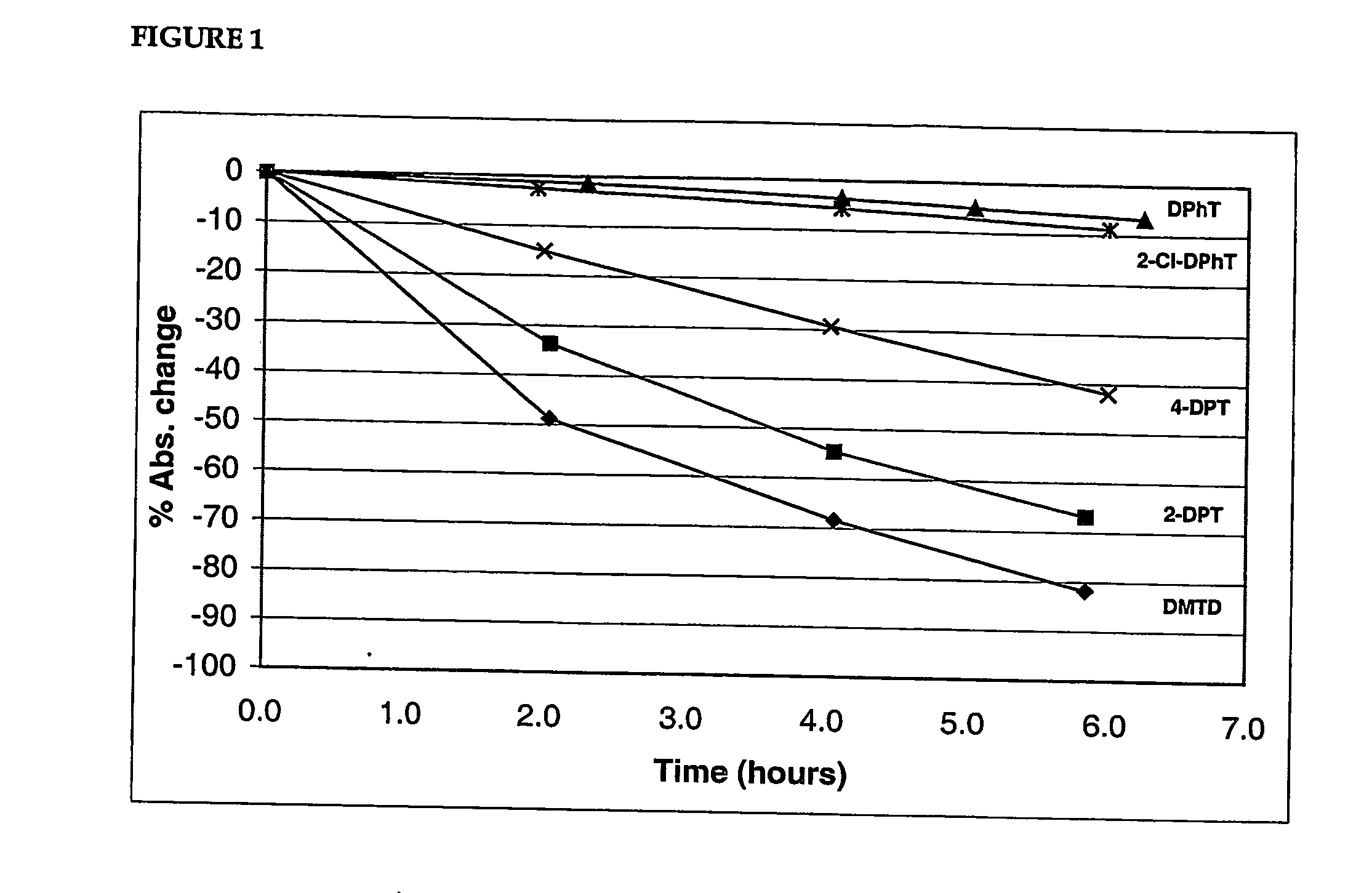Absorbent material for use in humid conditions
a technology of absorbent materials and humid conditions, applied in the direction of additives, transportation and packaging, containers preventing decay, etc., can solve the problems of serious shortened post-harvest life and quality of many fruits, vegetables and flowers, and very low levels of ethylene which can affect living plants,
- Summary
- Abstract
- Description
- Claims
- Application Information
AI Technical Summary
Benefits of technology
Problems solved by technology
Method used
Image
Examples
example 1
Comparison of Rate of Ethylene Scavenging of Tetrazine Compounds in Polystyrene
[0042] The depletion of the tetrazine compound, as measured by % absorbance change, was used to indicate ethylene scavenging rate of the tetrazine compounds.
[0043] Compositions were prepared by blending the tetrazine compounds at a concentration of 0.2M into polystyrene. Each composition was then compression moulded to form a film having a thickness of about 130 μm. Each film sample was then mounted in a cell holder and the maximum absorbance between 500-550 nm measured. The cell holders containing the film samples were then placed on a mesh platform in a 550 mL squat glass jar fitted with a screw cap and polypropylene wad seal. Each jar was thoroughly flushed with 100% ethylene and stored at room temperature.
[0044] At two-hourly intervals, the film sample was removed from the jar, and the maximum absorbance between 500-550 nm quickly measured before replacing the sample into the jar and charging with ...
example 2
Comparison of Sensitivity to Moisture of Tetrazine Compounds in Polystyrene
[0046] The depletion of the tetrazine compound, as measured by % absorbance change, was used to indicate the sensitivity to moisture of the tetrazine compounds.
[0047] Compositions were prepared by blending the tetrazine compounds at a concentration of 0.2M into polystyrene. Each composition was then compression moulded to form a film having a thickness of about 130 μm. Each film sample was then mounted in a cell holder and the maximum absorbance between 500-550 nm measured. The cell holders containing the film samples were then placed on a mesh platform in a 550 mL squat glass jar fitted with a screw cap and polypropylene wad seal. To achieve a relative humidity of 93% at 25° C., a saturated solution of potassium nitrate covered the bottom of the jars (approx. 10 mm below the mesh platform). The jars were stored in a controlled-temperature room at 25° C.
[0048] At intervals of several days for at least 42 d...
PUM
| Property | Measurement | Unit |
|---|---|---|
| Temperature | aaaaa | aaaaa |
| Fraction | aaaaa | aaaaa |
| Time | aaaaa | aaaaa |
Abstract
Description
Claims
Application Information
 Login to View More
Login to View More - R&D
- Intellectual Property
- Life Sciences
- Materials
- Tech Scout
- Unparalleled Data Quality
- Higher Quality Content
- 60% Fewer Hallucinations
Browse by: Latest US Patents, China's latest patents, Technical Efficacy Thesaurus, Application Domain, Technology Topic, Popular Technical Reports.
© 2025 PatSnap. All rights reserved.Legal|Privacy policy|Modern Slavery Act Transparency Statement|Sitemap|About US| Contact US: help@patsnap.com



